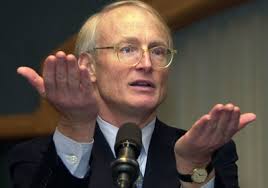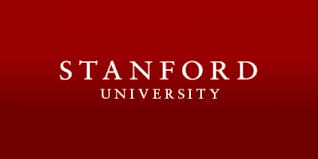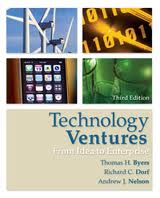 Harvard Professor Clayton Christensen, author of The Innovator’s Dilemma
Harvard Professor Clayton Christensen, author of The Innovator’s Dilemma
 Harvard Professor Michael Porter, author of numerous books on Competitive Strategy
Harvard Professor Michael Porter, author of numerous books on Competitive Strategy
Stanford Graduate School of Business and Harvard Business School are adopting drastically different strategies for delivering business education. These differing strategies are reflected in the debate that has erupted between two of Harvard Business School’s best known professors and their visions for the future of business education, Michael Porter and Clayton Christensen. I have also been personally tire kicking MOOC’s, acting as a mentor for Stanford’s online Technology Entrepreneurship course, hosted by NovoEd. I have been pleasantly surprised by the experience, and among the teams I am mentoring, is a group of Xerox senior research scientists acting as an entrepreneurial team.
Christensen predictably argues, as in his most famous book, that in order to survive disruptive change, businesses themselves must embrace disruptive change. Professor Porter on the other hand, argues that an enterprise “… must stay the course, even in times of upheaval, while constantly improving and extending its distinctive positioning.” Ironically, this debate is closely related to my most recent post, and a much earlier post on recognizing “strategic inflection points,” and acting on them.
Read more: http://mayo615.com/2014/05/15/nimbleness-strategy-or-opportunism/
Read more: http://mayo615.com/2013/08/02/strategic-inflection-points-when-companies-lose-their-way/
But when its dean, Nitin Nohria, faced the school’s biggest strategic decision since 1924 — the year it planned its campus and adopted the case-study method as its pedagogical cornerstone — he ran into an issue. Those professors, and those concepts, disagreed.
The question: Should Harvard Business School enter the business of online education, and, if so, how?
Universities across the country are wrestling with the same question — call it the educator’s quandary — of whether to plunge into the rapidly growing realm of online teaching, at the risk of devaluing the on-campus education for which students pay tens of thousands of dollars, or to stand pat at the risk of being left behind.

Harvard Business School faced a choice between different models of online instruction. Prof. Michael Porter favored the development of online courses that would reflect the school’s existing strategy.CreditDavid De la Paz/European Press Photo Agency
At Harvard Business School, the pros and cons of the argument were personified by two of its most famous faculty members. For Michael Porter, widely considered the father of modern business strategy, the answer is yes — create online courses, but not in a way that undermines the school’s existing strategy. “A company must stay the course,” Professor Porter has written, “even in times of upheaval, while constantly improving and extending its distinctive positioning.”
For Clayton Christensen, whose 1997 book, “The Innovator’s Dilemma,” propelled him to academic stardom, the only way that market leaders like Harvard Business School survive “disruptive innovation” is by disrupting their existing businesses themselves. This is arguably what rival business schools like Stanford and the Wharton School have been doing by having professors stand in front of cameras and teach MOOCs, or massive open online courses, free of charge to anyone, anywhere in the world. For a modest investment by the school — about $20,000 to $30,000 a course — a professor can reach a million students, says Karl Ulrich, vice dean for innovation at Wharton, part of the University of Pennsylvania.
“Do it cheap and simple,” Professor Christensen says. “Get it out there.”
But Harvard Business School’s online education program is not cheap, simple, or open. It could be said that the school opted for the Porter theory. Called HBX, the program will make its debut on June 11 and has its own admissions office. Instead of attacking the school’s traditional M.B.A. and executive education programs — which produced revenue of $108 million and $146 million in 2013 — it aims to create an entirely new segment of business education: the pre-M.B.A. “Instead of having two big product lines, we may be on the verge of inventing a third,” said Prof. Jay W. Lorsch, who has taught at Harvard Business School since 1964.
Starting last month, HBX has been quietly admitting several hundred students, mostly undergraduate sophomores, juniors and seniors, into a program called Credential of Readiness, or CORe. The program includes three online courses — accounting, analytics and economics for managers — that are intended to give liberal arts students fluency in what it calls “the language of business.” Students have nine weeks to complete all three courses, and tuition is $1,500. Only those with a high level of class participation will be invited to take a three-hour final exam at a testing center.
“We don’t want tourists,” said Jana Kierstead, executive director of HBX, alluding to the high dropout rates among MOOCs. “Our goal is to be very credible to employers.” To that end, graduates will receive a paper credential with a grade: high honors, honors, pass.
“Harvard is going to make a lot of money,” Mr. Ulrich predicted. “They will sell a lot of seats at those courses. But those seats are very carefully designed to be off to the side. It’s designed to be not at all threatening to what they’re doing at the core of the business school.”
Exactly, warned Professor Christensen, who said he was not consulted about the project. “What they’re doing is, in my language, a sustaining innovation,” akin to Kodak introducing better film, circa 2005. “It’s not truly disruptive.”
‘Very Different Places’
Professor Christensen did something “truly disruptive” in 2011, when he found himself in a room with a panoramic view of Boston Harbor. About to begin his lecture, he noticed something about the students before him. They were beautiful, he later recalled. Really beautiful.
“Oh, we’re not students,” one of them explained. “We’re models.”
They were there to look as if they were learning: to appear slightly puzzled when Professor Christensen introduced a complex concept, to nod when he clarified it, or to look fascinated if he grew a tad boring. The cameras in the classroom — actually, a rented space downtown — would capture it all for the real audience: roughly 130,000 business students at the University of Phoenix, which hired Professor Christensen to deliver lectures online.
Why had his boss, Mr. Nohria, given him permission to moonlight? “Because we didn’t have an alternative of our own” online, Mr. Nohria explained.
The dean had taken a wait-and-see approach — until 18 months ago, when his own university announced the formation of edX, an open-courseware platform that would hitch the overall university firmly to the MOOC bandwagon.
He said he remembered listening to an edX presentation at an all-university meeting. “I must confess I was unsure what we’d be really hoping to gain from it,” he said. “My own early imagination was: ‘This is for people who do lectures. We don’t do lectures, so this is not for us.’ ” In the case method, concepts aren’t taught directly, but induced through student discussion of real-world business problems that professors guide with carefully chosen questions.
“Nitin and I are close friends, and we’ve talked about this repeatedly,” Professor Porter said. “I think the big risk in any new technology is to believe the technology is the strategy. Just because 200,000 people sign up doesn’t mean it’s a good idea.” Though Professor Porter published “Strategy and the Internet” in the Harvard Business Review in 2001, before the advent of MOOCs, the article makes his sternest warning about the perils of online recklessness: “A destructive, zero-sum form of competition has been set in motion that confuses the acquisition of customers with the building of profitability.”
Mr. Nohria ultimately chose for the business school to opt out of edX. But this decision forced a question: What should the school do instead? “People came out in very different places,” Mr. Nohria said. “Very different places.”
One morning, he sat down for one of his regular breakfasts with students. “Three of them had just been in Clay’s course,” which had included a case study on the future of Harvard Business School, Mr. Nohria said. “So I asked them, ‘What was the debate like, and how would you think about this?’ They, too, split very deeply.”
Some took Professor Christensen’s view that the school was a potential Blockbuster Video: a high-cost incumbent — students put the total cost of the two-year M.B.A. at around $100,0000 — that would be upended by cheaper technology if it didn’t act quickly to make its own model obsolete. At least one suggested putting the entire first-year curriculum online.

On the topic of online instruction, Prof. Clayton Christensen said: ‘Do it cheap and simple. Get it out there.”CreditRick Friedman for The New York Times
Others weren’t so sure. “ ‘This disruption is going to happen,’ ” is how Mr. Nohria described their thinking, “ ‘but it’s going to happen to a very different segment of business education, not to us.’ ” The power of Harvard’s brand, networking opportunities and classroom experience would protect it from the fate of second- and third-tier schools, a view that even Professor Christensen endorses — up to a point.
“We’re at the very high end of the market, and disruption always hits the high end last,” said Professor Christensen, who recently predicted that half of the United States’ universities could face bankruptcy within 15 years.
Mr. Nohria states flatly, “I do not believe our M.B.A. program is at risk.” He concluded that disruption is not always “all or nothing,” and cited the businesses of music and retailing as examples. “In the music business, all record stores are gone,” he said, while in retailing, “it’s not like Amazon has eliminated everything; after those debates, my feeling was that we’re going to be more in that category.”
Still, Mr. Nohria said, he wanted some insurance. “Our beliefs can always turn out to be wrong,” he said. Harvard Business School could not afford to stand on the sidelines. So last summer, he said, he asked the business school’s administrative director, “What would you say if we started a little skunk works around this technology?”
‘Hollywood’ at Harvard
That skunk works, in a low-slung building 300 yards from campus, is not little. It buzzes with 35 full-time staff members — Wharton’s online efforts, by comparison, employ one-half of one staffer, Mr. Ulrich said — who are scrambling to complete a proprietary platform that, after this summer’s limited go-round, could support much larger enrollments.
“Here’s Hollywood,” Ms. Kierstead said on a recent tour, passing an array of video equipment that’s hauled around to film business case-study protagonists on location. Nearby, two digital animators worked on graphics for Professor Christensen’s forthcoming course. Another staff member handled financial aid.
To run HBX with Ms. Kierstead, Mr. Nohria tapped Bharat Anand, 48, a strategy professor who had been researching how traditional media companies have coped, or haven’t, with digital disruption. “I think about those cases a lot,” said Professor Anand, who is also Mr. Nohria’s brother-in-law.
The dean handed him a sheet of six guiding principles, including these: HBX should be economically self-sustaining. It should not substitute for the M.B.A. program. It should seek to replicate the Harvard Business School discussion-based style of learning. This was no easy assignment, Professor Anand conceded.
“What is competitive advantage?” he asked, invoking Professor Porter’s signature theory. “It comes from being fundamentally different. We teach this all the time. But saying it is one thing. Putting it into practice is hard. When everyone is going free, everyone is going with a similar type of platform, it takes courage to do your own thing.”
On campus, Harvard business students face one another in five horseshoe-shaped tiers with oversized name cards. They fight for “airtime” while the professor orchestrates discussion from a central “pit.”
“We don’t do lectures,” Mr. Nohria said. “Part of what had already convinced me that MOOCs are not for us is that for a hundred years our education has been social.”
The challenge was to invent a digital architecture that simulated the Harvard Business School classroom dynamic without looking like a classroom. In a demonstration of a course called economics for managers, the first thing the student sees is the name, background and location — represented by glowing dots on a map — of other students in the course.
A video clip begins. It’s Jim Holzman, chief executive of the ticket reseller Ace Ticket, estimating the supply of tickets for a New England Patriots playoff game: “Where I have a really hard time is trying to figure out what the demand is. We just don’t know how many people are on the sidelines saying, ‘Hey, I’m thinking about going.’ ”
It’s a complex situation meant to get students thinking about a key concept — “the distinction between willingness to pay and price,” Professor Anand said. “Just because something costs zero doesn’t mean people aren’t willing to pay something.” A second case study, on the pay model of The New York Times, drives the point home.
Then a box pops up on the screen with the words “Cold Call.” The student has 30 seconds to a few minutes to type a response to a question and is then prodded to assess comments made by other students. Eventually there is a multiple-choice quiz to gauge mastery of the concept. (This was surprisingly time-consuming to develop, Professor Anand said, because the business school does not give multiple-choice tests.)
At a faculty meeting in April, Professor Anand demonstrated the other two elements of HBX: continuing education for executives and a live forum. He unveiled the existence of a studio, built in collaboration with Boston’s public television station, that allows a professor to stand in a pit before a horseshoe of 60 digital “tiles,” or high-definition screens with the live images and voices of geographically dispersed participants. “I’m proud of our team, and how carefully they’ve thought about it even before they’ve done it,” Professor Porter said.
The Clashing Models
Not everyone was so impressed. Professor Christensen, for one, worried that Harvard was falling into the very trap he had laid out in “The Innovator’s Dilemma.” “I think that we’ve way overshot the needs of customers,” he said. “I worry that we’re a little too technologically ambitious.”

The dean, Nitin Nohria, found that students were also divided on the issue of online instruction.CreditRick Friedman for The New York Times
He also feared that HBX was tied too closely to the business school.
“There have been a few companies that have survived disruption, but in every case they set up an independent business unit that let people learn how to play ball in the new game,” he said. IBM survived the transition from mainframe computers to minicomputers, and then from minicomputers to personal computers, by setting up autonomous teams in Minnesota and then in Florida. “We haven’t got the separation required.”
Professor Porter has expressed the opposite view. Companies that set up stand-alone Internet units, he wrote in 2001, “fail to integrate the Internet into their proven strategies and thus never harness their most important advantages.” Barnes & Noble’s decision to set up a separate online unit is one of his cautionary tales. “It deterred the online store from capitalizing on the many advantages provided by the network of physical stores,” he said, “thus playing into the hands of Amazon.”
Here is where the two professors’ differences come to a head. In the Porter model, all of a company’s activities should be mutually reinforcing. By integrating everything into one, cohesive fortification, “any competitor wishing to imitate a strategy must replicate a whole system,” Professor Porter wrote.
In the Christensen model, these very fortifications become a liability. In the steel industry, which was blindsided by new technology in smaller and cheaper minimills, heavily integrated companies couldn’t move quickly and ended up entombed inside their elaborately constructed defenses.
“If Clay and I differ, it’s that Clay sees disruption everywhere, in every business, whereas I see it as something that happens every once in a while,” Professor Porter said. “And what looks like disruption is in fact an incumbent firm not embracing innovation” at all.
In other words, it’s not that U.S. Steel was destined to be undone by minimills. It’s that its managers let it happen.
“The disrupter doesn’t always win,” argued Professor Porter, who nonetheless called Professor Christensen “phenomenal” and “one of the great management thinkers.”
Who will win the coming business school shakeout? Professor Porter acknowledged that it’s a multidimensional question.
Most schools offering MOOCs do so through outside distribution channels like Coursera, a for-profit company that has Duke, Wharton, Yale, the University of Michigan and several dozen other schools in its stable. EdX, of which Harvard was a co-founder with the Massachusetts Institute of Technology, counts Dartmouth and Georgetown among its charter members.
“These will come to have considerable power,” predicted Jeffrey Pfeffer, a professor of organizational behavior at the Stanford Graduate School of Business. He pointed to the aircraft industry: “In order to get into China, Boeing transferred its technology to parts manufacturers there. Pretty soon there’s going to be Chinese firms building airplanes. Boeing created their own competition.” Business schools, he said, “are doing it again; we are creating our own demise.”
Professors as Online Stars
The worry is all the more acute at midtier schools, which fear that elite business schools will move to gobble up a larger share of a shrinking pie.
“Would you rather watch Kenneth Branagh do ‘Henry V,’ or see it at a community theater?” asked Mr. Ulrich at Wharton. “There are going to be some instructors who become more valuable in this new world because they master the new medium. We’d rather be those guys than the people left behind.”
This raises a still more radical case, in which the winners are not any institution, new or old, but a handful of star professors. One of Professor Porter’s generic observations — that the Internet increases the “bargaining power of suppliers” — suggests just that. “It’s potentially very divisive in a way,” he acknowledged. “We’re all partners; we all get paid roughly the same. Anything that starts to fracture the enterprise is a sobering prospect.”
François Ortalo-Magné, dean of the University of Wisconsin’s business school, says fissures have already appeared. Recently, a rival school offered one of his faculty members not just a job, but also shares in an online learning start-up created especially for him. “We’re talking about millions of dollars,” Mr. Ortalo-Magné said. “My best teachers are going to find platforms so they can teach to the world for free. The market is finding a way to unbundle us. My job is to hold this platform together.”
To that end, he has changed his school’s incentive structure, which, as in most of academia, was based primarily on the number of research articles published in elite journals. Now professors who can’t crack those journals but “have a gift for inspiring learning,” he said, in person or online, are being paid as top performers, too. “We are now rewarding people who have tenure to give up on research,” Mr. Ortalo-Magné said.
Mr. Ortalo-Magné spins out the possibilities of disruption even further. “How many calculus professors do we need in the world?” he asked. “Maybe it’s nine. My colleague says it’s four. One to teach in English, one in French, one in Chinese, and one in the farm system in case one dies.”
What is to stop a Coursera from poaching Harvard Business School faculty members directly? “Nothing,” Mr. Nohria said. “The decision people will have to make is whether being on the platform of Harvard Business School, or any great university, is more important than the opportunity to build a brand elsewhere.
“Does Clay Christensen become Clay Christensen just by himself? Or does Clay Christensen become Clay Christensen because he was at Harvard Business School? He’ll have to make that determination.”









